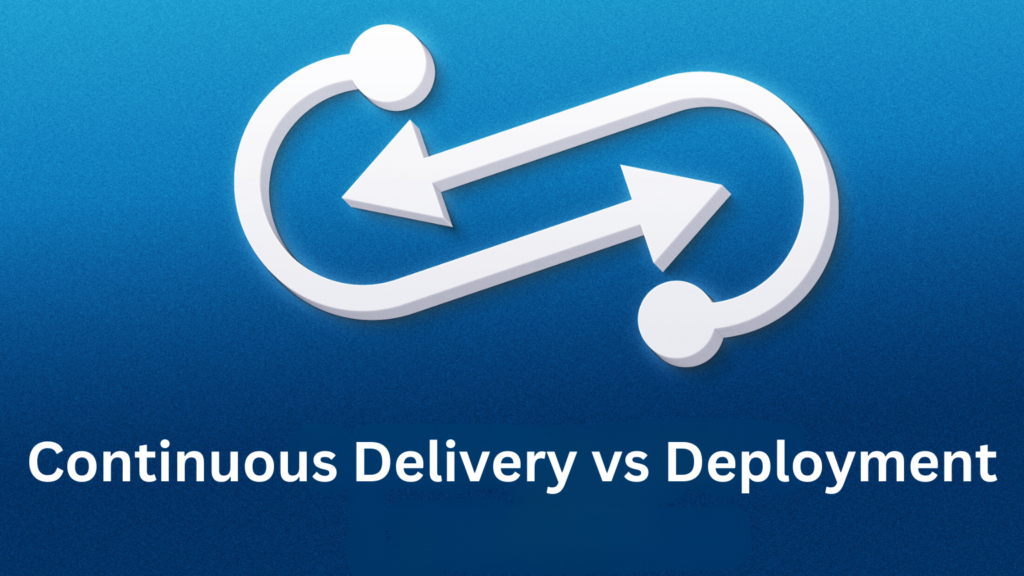Feature Flag Management: Develop New Features Quickly

In today’s digital age, organizations are constantly striving to improve their services and stay ahead of the competition. One way to achieve this is by developing new features for their applications. However, deploying new features can be a challenging process, especially when trying to prevent downtime for customers. This is where feature flag management comes in. In this article, we will explore the rise of feature flag management and how it can help organizations develop and deploy new features quickly and safely. Feature Flagging Feature flagging is a software development technique that allows developers to turn features on and off at runtime. This means that new features can be developed and tested without affecting the user experience. Feature flags are essentially a set of conditional statements that determine whether a feature should be enabled or disabled. This allows developers to control the release of new features and ensure that they are working as intended before they are made available to users. Choosing the Best Lidar Company in 2023 The Benefits of Feature Flagging There are several benefits to using feature flagging in software development. One of the main benefits is that it allows organizations to develop and deploy new features quickly and safely. By using feature flags, developers can release new features to a small subset of users and gradually roll them out to a larger audience. This helps to minimize the risk of downtime and ensures that new features are working as intended before they are made available to all users. Another benefit of feature flagging is that it allows organizations to test new features in a real-world environment. By releasing new features to a small subset of users, organizations can gather feedback and make improvements before rolling out the feature to a larger audience. This helps to ensure that new features are meeting the needs of users and are providing value to the organization. Challenges of Feature Flagging While feature flagging offers many benefits, there are also some challenges that organizations may face when implementing this technique. One of the main challenges is managing the deployment of a large number of feature flags. As the number of feature flags increases, it can become difficult to keep track of which flags are enabled and which are disabled. This can lead to confusion and errors, which can result in downtime for users. Another challenge of feature flagging is that it can be time-consuming to implement. Developing and testing feature flags requires a significant amount of time and resources, which can be a challenge for organizations with limited budgets and resources. Finally, integrating feature flags within existing processes can be difficult. Organizations may need to modify their existing processes to accommodate feature flags and ensure that they are being used effectively. This can require changes to development, testing, and deployment processes, which can be a significant undertaking. Feature Flag Management To effectively manage feature flags, organizations need to have a clear strategy in place. This strategy should include guidelines for when to use feature flags, how to manage them, and how to integrate them into existing processes. Here are some best practices for managing feature flags: Feature Flag Real Life Example Several companies have successfully used feature flags to improve their software development process. Here are a few examples: Etsy: Etsy uses feature flags to test new features with a subset of users before rolling them out to everyone. This has helped them reduce the risk of negative user feedback and improve the overall user experience. LinkedIn: LinkedIn uses feature flags to enable canary releases, which allow them to test new features in a production environment with a subset of users before rolling them out to everyone. This has helped them reduce the risk of introducing bugs and other technical issues. CloudBees: CloudBees uses feature flags to enable phased rollouts, which allow them to gradually roll out new features to users over time. This has helped them reduce the risk of negative user feedback and improve the overall user experience. Uber: Uber uses feature flags to enable phased rollouts, which allow them to gradually roll out new features to users over time. This has helped them reduce the risk of negative user feedback and improve the overall user experience. Facebook: Facebook uses feature flags to enable canary releases, which allow them to test new features in a production environment with a subset of users before rolling them out to everyone. This has helped them reduce the risk of introducing bugs and other technical issues. Bayesian Network vs Neural Network The Future of Feature Flagging As digital technology continues to evolve, feature flagging is likely to become even more important for organizations. According to a recent survey, organizations are expected to develop an average of five new applications in-house by their software development team in the next 12 months. This means that organizations are likely to have 22 different applications for use by customers or staff in the next 12 months, on average. With the number of feature flags set to increase over the next 12 months, organizations may find that more help is required to manage them effectively, potentially with the assistance of a third-party supplier. Conclusion Feature flagging is becoming widely used within organizations to help them manage the ever-changing demands from customers and stay ahead of competitors. While there are challenges involved in implementing and managing feature flags, the benefits are clear. By using feature flags, organizations can develop and deploy new features quickly and safely, while also gathering feedback and making improvements. To effectively manage feature flags , organizations need to have a clear strategy in place that includes guidelines for when to use feature flags, how to manage them, and how to integrate them into existing processes. By following best practices for managing feature flags, organizations can ensure that they are being used effectively and are providing value to the organization. FAQs
Continuous Delivery vs Deployment: Which is Best for Your Software Development Process?

In today’s fast-paced software development world, it’s essential to have a streamlined and efficient process for delivering high-quality software to your customers. Two popular practices for achieving this are continuous delivery and continuous deployment. While these two practices may sound similar, they have some key differences that can impact your software development process. In this article, we’ll explore the differences between continuous delivery vs deployment and help you determine which one is best for your team. Continuous Delivery Continuous delivery is a software development practice that focuses on automating the software delivery process. The goal of continuous delivery is to ensure that software can be released to production at any time with minimal risk. Continuous delivery involves automating the build, test, and deployment processes, so that software can be delivered to production quickly and efficiently. Continuous delivery is achieved through the use of a continuous integration (CI) pipeline. The CI pipeline is a series of automated steps that are triggered whenever changes are made to the codebase. The pipeline includes steps such as building the code, running automated tests, and deploying the software to a staging environment for further testing. One of the key benefits of continuous delivery is that it allows teams to release software more frequently. By automating the delivery process, teams can release software updates quickly and with minimal risk. This can help teams to respond to customer feedback more quickly and stay ahead of the competition. Best Programming Languages For Robotics Continuous Deployment Continuous deployment is a software development practice that takes continuous delivery one step further. With continuous deployment, changes to the codebase are automatically deployed to production as soon as they pass automated tests. This means that software updates are released to customers as soon as they are ready. Continuous deployment requires a high level of automation and a robust testing process. The goal of continuous deployment is to reduce the time between when a change is made to the codebase and when it is released to customers. This can help teams to respond to customer feedback more quickly and stay ahead of the competition. Continuous Delivery vs Deployment: What’s the Difference? While continuous delivery and continuous deployment may sound similar, there are some key differences between the two practices. The main difference is that continuous delivery involves automating the software delivery process up to the point of release, while continuous deployment involves automating the entire release process. Continuous delivery involves automating the build, test, and deployment processes, so that software can be delivered to production quickly and efficiently. However, the decision to release the software to customers is still made manually by a human. This means that there is a final checkpoint where a human reviews the software and decides whether or not to release it to customers. This manual approval step is what sets continuous delivery apart from continuous deployment. With continuous deployment, changes to the codebase are automatically deployed to production as soon as they pass automated tests. This means that there is no manual approval step, and software updates are released to customers as soon as they are ready. While this can help teams to release software more quickly, it also requires a high level of automation and a robust testing process to ensure that software updates are released without errors. Which One is Best for Your Team? Deciding whether to use continuous delivery or continuous deployment depends on your team’s needs and goals. If your team values control and wants to be the last filter before new releases are deployed to end-users, then continuous delivery may be the best choice. This practice allows businesses to operate in a more regulated way and automatically test the final product with automation testing tools. On the other hand, if your team values speed and wants to release software updates quickly and efficiently, then continuous deployment may be the best choice. This practice can help teams to respond to customer feedback more quickly and stay ahead of the competition. It’s important to note that both continuous delivery and continuous deployment require a high level of automation and a robust testing process. Without these elements, neither practice will be successful. It’s also important to have a strong DevOps culture in place to support these practices and ensure that everyone on the team is working towards the same goals. NVR vs DVR: Choosing the Right Option for Your Security Needs Conclusion Continuous delivery and continuous deployment are two popular practices for delivering high-quality software to customers quickly and efficiently. While these practices may sound similar, they have some key differences that can impact your software development process. Deciding which practice to use depends on your team’s needs and goals. Whether you choose continuous delivery or continuous deployment, it’s important to have a strong DevOps culture in place and a robust testing process to ensure that your software is of the highest quality.
Stages of Software Development: A Comprehensive Guide

Software development is a complex process that requires a well-defined, structured sequence of stages to develop the intended software product. This process is known as the Software Development Life Cycle (SDLC). In this article, we will explore the different stages of software development and their importance in creating a successful software product. Software development Software development is the process of designing, creating, testing, and maintaining software. It involves several stages, each of which is essential to the success of the project. The stages of software development are collectively known as the Software Development Life Cycle (SDLC). The SDLC is a framework that provides a structured approach to software development. It consists of several phases, each of which has its own set of activities and deliverables. The SDLC is a widely accepted standard for software development, and it is used by software development companies all over the world. Software Engineering vs Data Science The Stages of Software Development The SDLC consists of several stages, each of which is essential to the success of the project. In this section, we will explore each stage in detail. Stage 1: Initiation It is the first stage of the SDLC. It involves defining the scope of the project, identifying the stakeholders, and creating a project charter. The project charter is a document that outlines the objectives, scope, and deliverables of the project. Stage 2: System Concept Development This stage involves defining the system requirements and creating a high-level design. This stage is crucial to the success of the project, as it lays the foundation for the rest of the development process. Stage 3: Planning and Requirements Analysis This stage involves creating a detailed project plan and gathering the requirements for the system. This stage is critical to the success of the project, as it ensures that the project is properly scoped and that the requirements are clearly defined. Stage 4: Design This stage involves creating a detailed design for the system. This stage is critical to the success of the project, as it ensures that the system is properly designed and that all the requirements are met. Stage 5: Development This stage involves writing the code for the system. This stage is critical to the success of the project, as it ensures that the system is properly developed and that all the requirements are met. Stage 6: Integration and Testing This stage involves integrating the different components of the system and testing the system as a whole. This stage is critical to the success of the project, as it ensures that the system is properly integrated and that it meets all the requirements. Stage 7: Repetition of Phases This stage involves repeating certain phases of the SDLC as needed. This stage is important because it allows for changes to be made to the system as needed, and ensures that the system is properly tested and validated. Stage 8: Implementation The implementation stage involves deploying the system to the production environment. This stage is critical to the success of the project, as it ensures that the system is properly deployed and that it meets all the requirements. Stage 9: Operations and Maintenance This stage involves maintaining the system and ensuring that it continues to meet the requirements. This stage is critical to the success of the project, as it ensures that the system remains operational and that it continues to meet the needs of the users. Stage 10: Disposition This stage involves retiring the system and disposing of any assets associated with it. This stage is critical to the success of the project, as it ensures that the system is properly retired and that any associated assets are disposed of properly. Iterative Models Iterative models are a popular approach to software development. This approach involves creating successive versions of the software and going through each process step, then iterating. The iterative approach allows for feedback between steps and lowers the cost of implementing requirement changes. It also allows for some client/user feedback to be considered, and smaller-sized steps mean delivery of something comes sooner. Teamwork Teamwork is essential in software development. A software development team typically consists of developers, designers, testers, and project managers. Each member of the team plays a crucial role in the success of the project. Collaboration and communication are key to ensuring that everyone is on the same page and working towards the same goal. Project Influences Several factors can influence a software development project’s success, including scale and legacy. Large-scale projects require more resources and a more extensive team, while legacy projects require working with existing code and systems. It is essential to consider these factors when planning a software development project to ensure that the project’s scope is realistic and achievable. Cybersecurity vs Software Engineering: Choosing the Right Career Path Professionalism and Personal Ethics Professionalism and personal ethics are crucial in software engineering. Software engineers must adhere to ethical standards and maintain a high level of professionalism. This includes being honest and transparent with clients, respecting intellectual property, and ensuring that the software is secure and free of vulnerabilities. Conclusion Software development is a complex process that involves several stages. Each stage is crucial to the success of the project, and skipping any of them can lead to disastrous consequences. It is essential to follow a structured approach to software development and to consider factors such as feasibility, requirements, architecture, development, validation, and evolution/maintenance. Additionally, teamwork, project influences, and professionalism and personal ethics are crucial to the success of a software development project. By following these guidelines, software development teams can ensure that their projects are successful and meet the needs of their clients. References
